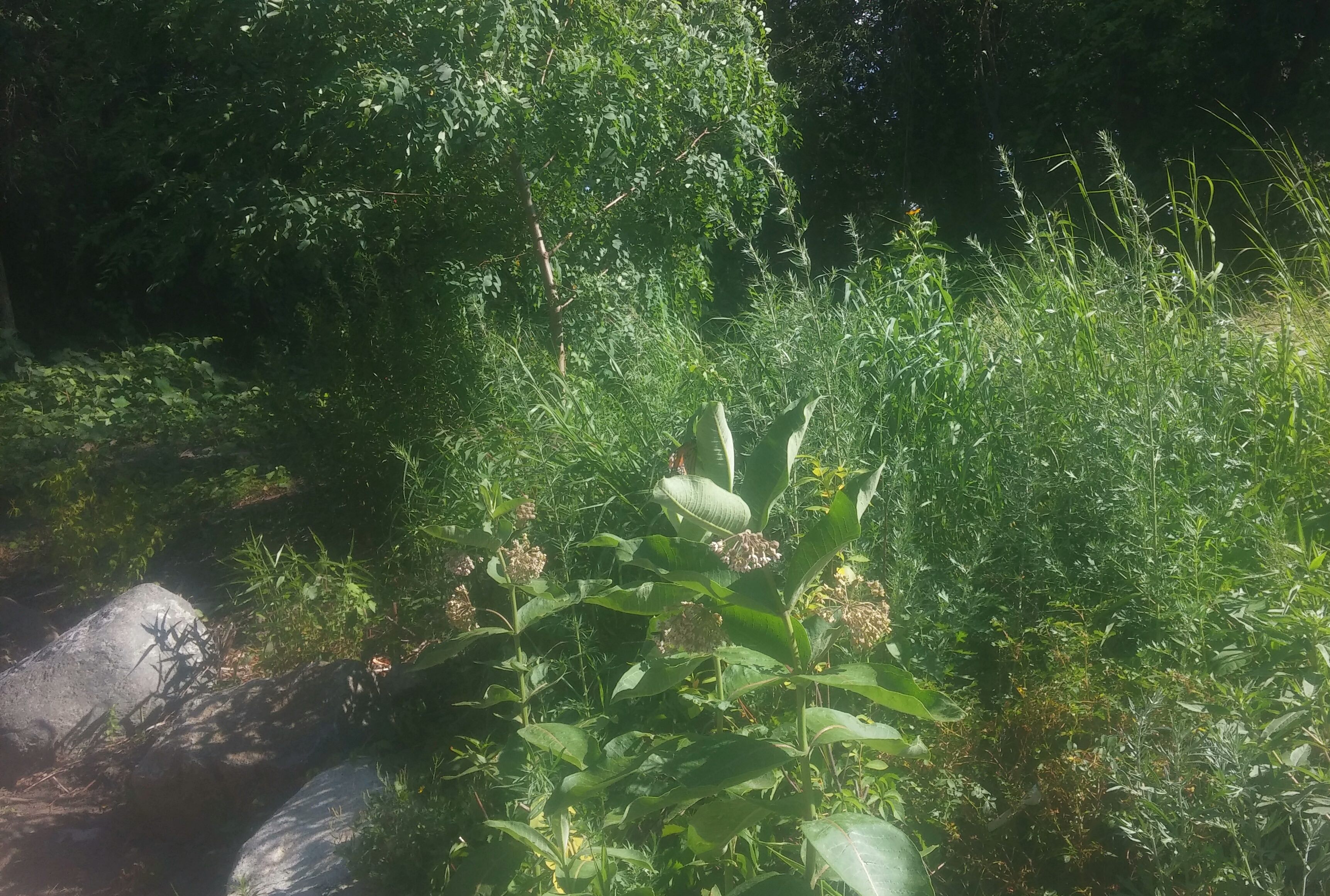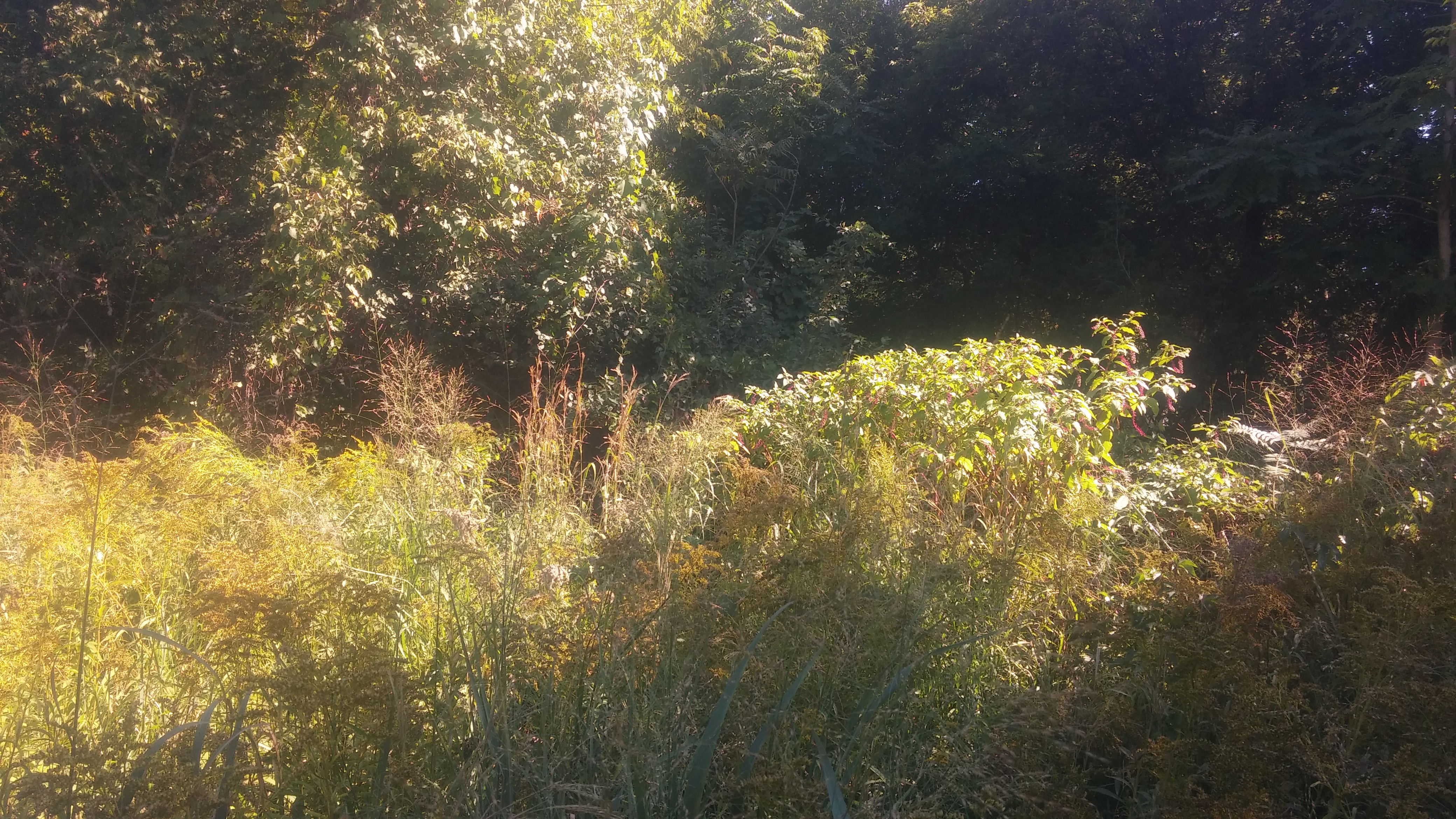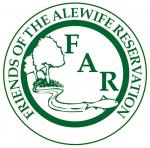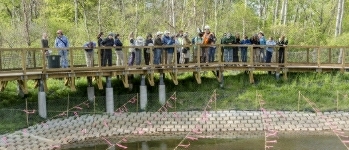Photos by Ellen Mass

A monarch butterfly visiting a milkweed plant at Blair Pond.
Written by Ellen Mass and Jake Osborne
Massachusetts is currently experiencing unprecedented drought conditions causing billions of dollars of damage from negative impacts to farms, water supplies, drinking water and wells. Record low rainfall and low water tables are also threatening fish and wildlife resources and the natural processes that filter and restore our rivers, ponds and streams. Indeed, Cambridge lies within a region declared by the state to be in a ‘drought warning,’ meaning outdoor water use should be eliminated.
We see the 'shaved' landscape resources around us deeply drying and dying, but there are isolated examples of our urban nature persisting. One of the most vibrant of these is a 3 acre grassland at Blair Pond, located on the Cambridge/Belmont border, behind Burger King on Mooney St. Lush trees, towering vines and tall grasses demonstrate the splendor of rich microbial soils maintained by surrounding woodlands with deep-rooted blue stem, timothy, switch, Indian, rice and panic grasses that sequester carbon at least 12 hours per day for climate change functions. The plant diversity at Blair Pond is also good for native insects, which in many cases have evolved with specific native plants. A good example is the Monarch butterfly, which lays its eggs only on Milkweed. Their caterpillars have evolved to eat only Milkweed, and the plant is poisonous to other caterpillars.
The tremendous plant growth documented in the Blair Pond grassland is remarkable given that only two years ago the same area was a thick, low-diversity forest. Shortly after the meadow area was mowed in 2014, the long-dormant seed bank sprang to life. Thistle, staghorn sumac, poplar, wildflowers and even rare grasses sprang up, creating a breathtaking, rich meadow and providing a rare opportunity to watch and document a meadow springing back to life after years in the dark.
One test FAR and volunteers do is examine whether the grasses (some of which are considered weeds) have begun to replenish soil nitrogen by observing what is growing there. This is important because bare earth is dead earth. Roots dive deep into the soil and bring up nutrients. They also break up the soil, which had been hard-packed, and allow water to percolate deeper into the soil. Contrary to outdated thought, wild plants do not leach nutrients from topsoil because they can go deeper, fix nitrogen in the soilwith the help of special bateria, and are good for cultivated gardens. Goldenrod is a good nitrogen fixer and predominant plant at Blair. A few other grasses and sedges found in the Blair Pond meadow include Canada rye, wild rye, densetuft hairsedge, eastern woodland sedge, canary, fall panic grass, nimbleweed,perennial rye, red top grass,velvet grass and Virginia wild rye grass.
All this plant growth is good news on land, such as at the Blair Pond meadow, but it can be harmful when it happens in aquatic ecosystems. Recent testing by the local watershed association in the storm water wetland on the south side of Little River and in Blair Pond revealed an over-abundance of phosphorus and ammonia. These chemicals can lead to explosive growth of algae, ultimately leading to depleted oxygen levels that make it difficult to sustain life in local water bodies such as Little River (which is confused with Alewife Brook).
Unfortunately, these issues are not taken seriously at a city planning and development level. At the Alewife Envisioning Committee meeting on September 15th, when Cambridge Community Development sought to prepare residents for more large residential buildings and thousands more units, discussion of these and other serious environmental issues was not permitted. Members ascertained that these floodplain, climate change or habitat issues are a thing of past, pre-determined by earlier political decisions. Attendees deduced from the discussion that the present industrial quadrangle area (former city dump) is open bidding for developers. However, construction on the scale discussed at the meeting wouldlikely exacerbate transportation gridlock at Alewife, and strategies to deal with water quality consisted of little more than landscaping styles and storm water storage space under proposed buildings. Those approaches are inadequate given that those soils are hardpan strata at the top and hardly penetrable because of predominant harsh clay soils. More importantly, the federal government has laws against building on or near floodplains and floodways.
The City of Cambridge and the development agency must follow the law and should either limit construction or insist, in writing, on water quality preservation strategies that meet Federal standards.

The Blair Pond meadow in the warm light of a late autumn afternoon.
- Home
- Directions
- FAR Wildlife Blog
- Calendar
- News
- Donate Now
- Get Social!
- Storm Water Wetlands
- Plants and Restoration
- Photos
- Videos
- About & Projects
- Master Plan for Alewife
- Archive
- Newsletters
- Contact
 Presentation Spotlighting Alewife Reservation
Presentation Spotlighting Alewife Reservation
 Follow us on Twitter
Follow us on Twitter
 Like us on Facebook
Like us on Facebook
 Follow us on Instagram
Follow us on Instagram
Forward our web address to a friend!
- An Urban Gem - Alewife Reservation Nature Preserve
- Envisioning The Silver Maple Forest
- History and Policies of Cambridge, Belmont, and DEP
- Storm Water Wetlands
- Friends of Alewife Reservation brochure
(front, back) - Technical Analysis of Upper Alewife Basin
- Watershed: An Excursion in Four Parts
- The River Is A Restless Spirit: Life in the floodplain forest
-
Assessment of Silver Maple forest for DEP Adjudicatory hearings and
Patrick Fairbairn, author of the Assessment - Community Native Garden Flora
The
Alewife Reservation
is a unique natural resource for the communities of Belmont, Arlington and Cambridge
and home to hundreds of species, including hawks, coyotes beavers, snapping turtles, wild turkeys and muskrats,
the reservation is a unique natural resource for the community.
Historical information (Powerpoint)
Friends of Alewife Reservation works to protect and restore this wild area and the surrounding area for the water quality, native plants, animals and over 90 bird species with paths for walking, running and biking, recreation, and for classroom education and research. We regularly steward and preserve the Reservation area for wildlife and for the enjoyment of present and future generations.

(video)
By-Laws
About Friends of Alewife Reservation
Statement of Purpose
Citizen Forester newsletter archive
The Birds of the Cambridge Region of Massachusetts

by William Brewster 1906
Nuttal Ornithological Society
Biodiversity Study of Alewife Reservation Area: Species, Habitat, Ecosystems

Inventories by David Brown, wildlife assessor (2003, 2004.) Published by and available from FAR for $10. Write or call for your copy. (sample)
Updated Dave Brown Inventories (2008, 2010)
Inventories of Alewife Reservation Wetland Plants by Walter Kittredge, Botanist (2013)
Email: alewife@greencambridge.org
Join our mailing list
For technical problems with this website, email: webmaster@friendsofalewifereservation.org

